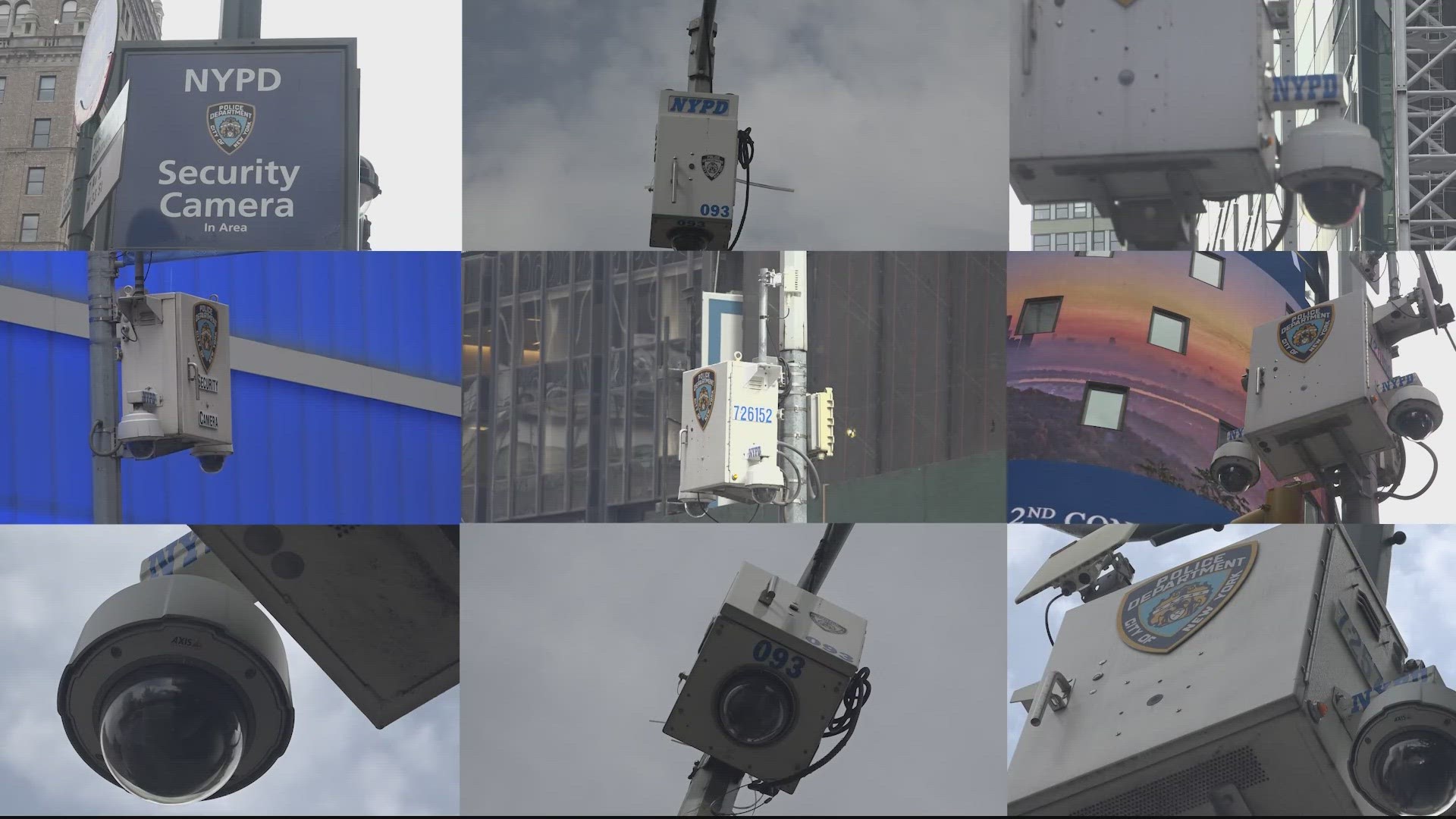In November, DC Police released the video publicly, hoping for an arrest.
Assistant Chief Leslie Parsons is head of MPD’s Homeland Security Bureau, which oversees the department’s crime camera network. He says the cameras are a valuable tool for a police department spread thin with officer vacancies and rising crime.
“I don't think a camera can replace police officers,” Parsons said. “I think that it could be kind of a force multiplier when it comes to needing to have eyes in several places at once.”
In a one-on-one interview with WUSA9, Parsons said the only time police use the cameras to watch people’s movements in real time is during a march or protest where police are guarding against the threat of unrest.
In all other cases, he says detectives use the video after the fact to investigate a crime.
In September, Parsons joined MPD leadership on a trip to a place Amnesty International calls “surveillance city," New York City. Where crime cameras have eyes just about everywhere you look.
Parsons said the MPD contingent, which included Chief Pamela Smith, met with NYPD to learn more about how one of the largest and oldest police forces in the U.S. uses this new age technology to fight crime. Although comparing New York City’s crime camera network to D.C.’s is a stretch.
NYPD has cameras with facial recognition. DC Police does not. NYPD has more than 60,000 cameras citywide. Even on the subway. Right now, MPD has about three hundred cameras and no access to Metro cameras.
But now the District is looking to expand its system. Over the summer, Mayor Bowser announced plans to double the number of crime cameras on D.C. streets over the next two years. She asked DC Council for $500,000 initial funding for the project. DC Council upped the amount, approving $1,000,000 in funding to speed things up.
But ALCU-DC opposes the expansion of MPD’s crime camera program.
“Studies have shown that these are not effective in reducing violent crime,” said ACLU Legal Director Scott Michelman.
Michelman says, there’s a lack of oversight and accountability to ensure police aren’t misusing cameras to spy on people, potentially violating their constitutional rights.
Michelman also told WUSA9, crime cameras are largely used to target people of color.
“It’s just not right to subject someone to 24/7 surveillance, particularly on a racial basis,” he said.
WUSA9 plotted the locations of DC Police’s crime camera’s, which are posted on its website.
According to its website, 42% of them are east of the river in Ward 7 and 8. Here’s the breakdown citywide by police district:
First District
- 45 Crime Cameras (15%)
Second District
- 40 Crime Cameras (14%)
Third District
- 27 Crime Cameras (9%)
Fourth District
- 21 Crime Cameras (7%)
Fifth District
- 38 Crime Cameras (13%)
Sixth District
- 63 Crime Cameras (21%)
Seventh District
- 61 Crime Cameras (21%)
Parsons said MPD is not targeting communities of color.
“You mentioned the 42%, east of the river,” Parsons told Chief Investigative Reporter Eric Flack. “That leaves about 58% that are on the other side of the river. Right? I think that when cameras are deployed, they're deployed for the need. It's not based off the community; it's based off the need for the camera. It's based off the crime.”
Parsons acknowledged adding more crime cameras to communities of color could lead to tough conversations with some of the people who live there.
“I think that any conversation could be tough,” Parsons said. “But again, I go back to people in our communities, all communities across the city want to feel safe.”
“And this is another tool the Metropolitan Police Department can use to make people feel safe.”
Parsons said crime camera video isn’t enough to get a conviction on its own. Cameras are only a tool to help detectives do their job.
WUSA9 could not find any other area police departments using crime cameras, although many departments do have mobile cameras, they can set up to monitor large crowds, much like MPD does during protests.

